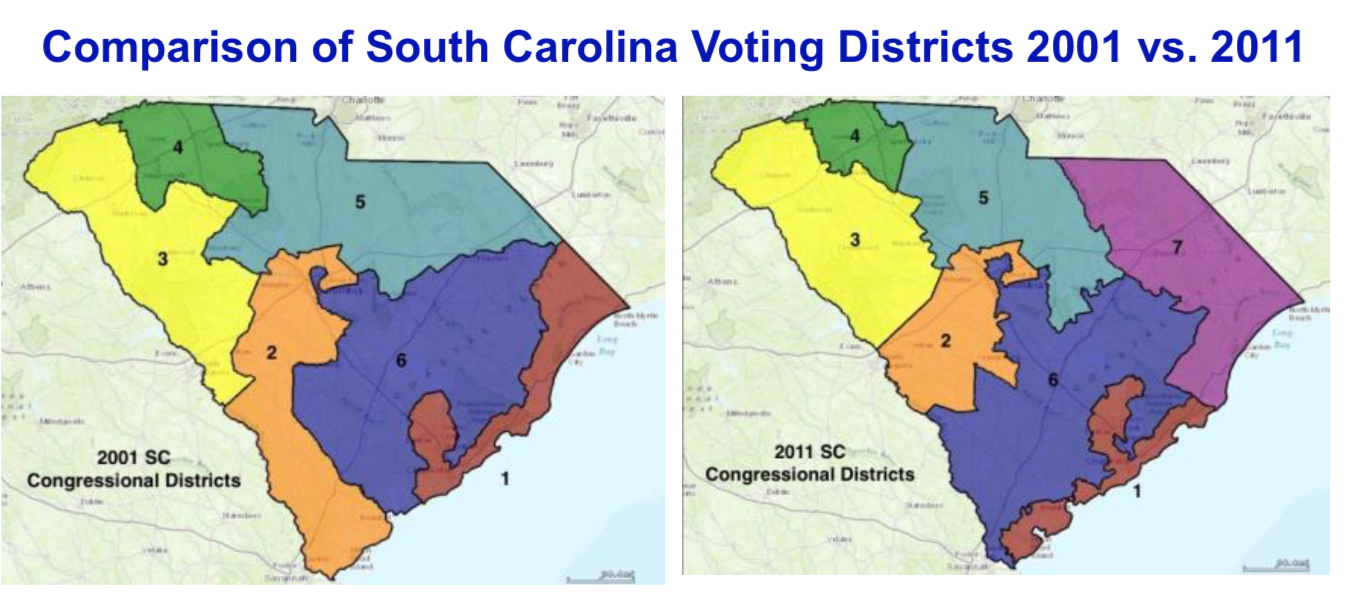
What is gerrymandering?
Gerrymandering is the practice of drawing voting district lines in a way that influences the outcome of elections. It has been around since the early days of our democracy but it reached new heights as an aggressive and transformational partisan tool in redistricting outcomes following the 2010 census.
And, since then, refinements in computer technology and modern software have taken gerrymandering to a whole new level. So much so, that in states where the legislature is controlled by one party and that same legislature draws the voting district maps, as in the case of South Carolina, then there is a high probability that the party in power at the time the districts are drawn, will stay in power until voting maps are redrawn with the added likelihood that the same party will again control the mapping of districts.
Tactics: cracking and packing
During the redistricting process, district maps can be manipulated through tactics known as “cracking” and “packing” whereby the maps are configured in such a way as to either pack the opposing party with “extra” voters, making it more likely that the party in control of the mapping can win more districts than would occur without gerrymandering; or, the minority party’s voters can be“cracked” among a number of districts making their votes ineffective against a now majority party stronghold in each “cracked” district. A short video from The Washington Post shows examples of gerrymandering.
South Carolina, one of 13 "extremely gerrymandered"
Thirteen states, including South Carolina, meet the criteria of being “extremely gerrymandered” when analyses are done using instruments such as the “Efficiency Gap.” The “Efficiency Gap” can be used to create voting district maps that convert to seats in a politically equitable manner.  The above maps of the U.S. House of Representatives districts in South Carolina illustrate changes made since the last census. One shows the districts, in 2001 and the other in 2011 after South Carolina gained a seat in the U.S. House of Representatives, giving us a total of seven U.S. Congressional districts. The current breakdown of South Carolina voters hovers around 55% Republican and 45% Democrat; however, Republicans hold six of the seven Congressional seats (86%). In the past the U. S. Supreme Court has acknowledged that partisan gerrymandering exists, but is it extreme? One question before the Court in the current partisan gerrymandering case out of Wisconsin is: By what measures can we say that “extreme gerrymandering” exists?
The above maps of the U.S. House of Representatives districts in South Carolina illustrate changes made since the last census. One shows the districts, in 2001 and the other in 2011 after South Carolina gained a seat in the U.S. House of Representatives, giving us a total of seven U.S. Congressional districts. The current breakdown of South Carolina voters hovers around 55% Republican and 45% Democrat; however, Republicans hold six of the seven Congressional seats (86%). In the past the U. S. Supreme Court has acknowledged that partisan gerrymandering exists, but is it extreme? One question before the Court in the current partisan gerrymandering case out of Wisconsin is: By what measures can we say that “extreme gerrymandering” exists?
For more information, go to “How the New Math of Gerrymandering Works” in The New York Times and “Can Computers Fix Gerrymandering?” from Time magazine.